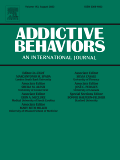“Liver fibrosis, a consequence of chronic liver injury and a way station to cirrhosis and hepatocellular carcinoma, lacks effective treatment.
Endocannabinoids acting via cannabinoid-1 receptors (CB1R) induce profibrotic gene expression and promote pathologies that predispose to liver fibrosis.
CB1R antagonists produce opposite effects, but their therapeutic development was halted due to neuropsychiatric side effects. Inducible nitric oxide synthase (iNOS) also promotes liver fibrosis and its underlying pathologies, but iNOS inhibitors tested to date showed limited therapeutic efficacy in inflammatory diseases.
Here, we introduce a peripherally restricted, orally bioavailable CB1R antagonist, which accumulates in liver to release an iNOS inhibitory leaving group.
Additionally, it was able to slow fibrosis progression and to attenuate established fibrosis. Thus, dual-target peripheral CB1R/iNOS antagonists have therapeutic potential in liver fibrosis.
For multifactorial chronic diseases, such as fibrosis, the conventional pharmacological approach based on the “one-disease/one-target/one-drug” paradigm limits therapeutic efficacy and could be improved by simultaneously hitting multiple therapeutic targets.
One such target is the endocannabinoid/cannabinoid-1 receptor (endocannabinoid/CB1R) system.
The dual targeting of peripheral CB1R and iNOS demonstrated here exemplifies the therapeutic gain obtained by simultaneously hitting more than one molecule, which could then engage distinct as well as convergent cellular pathways. The advantage of such an approach is highlighted by emerging experience with recently developed antifibrotic medications, which indicates that targeting a single pathway has limited effect on fibrotic diseases .
Thus, the approach illustrated by the present study has promise as an effective antifibrotic strategy.”








